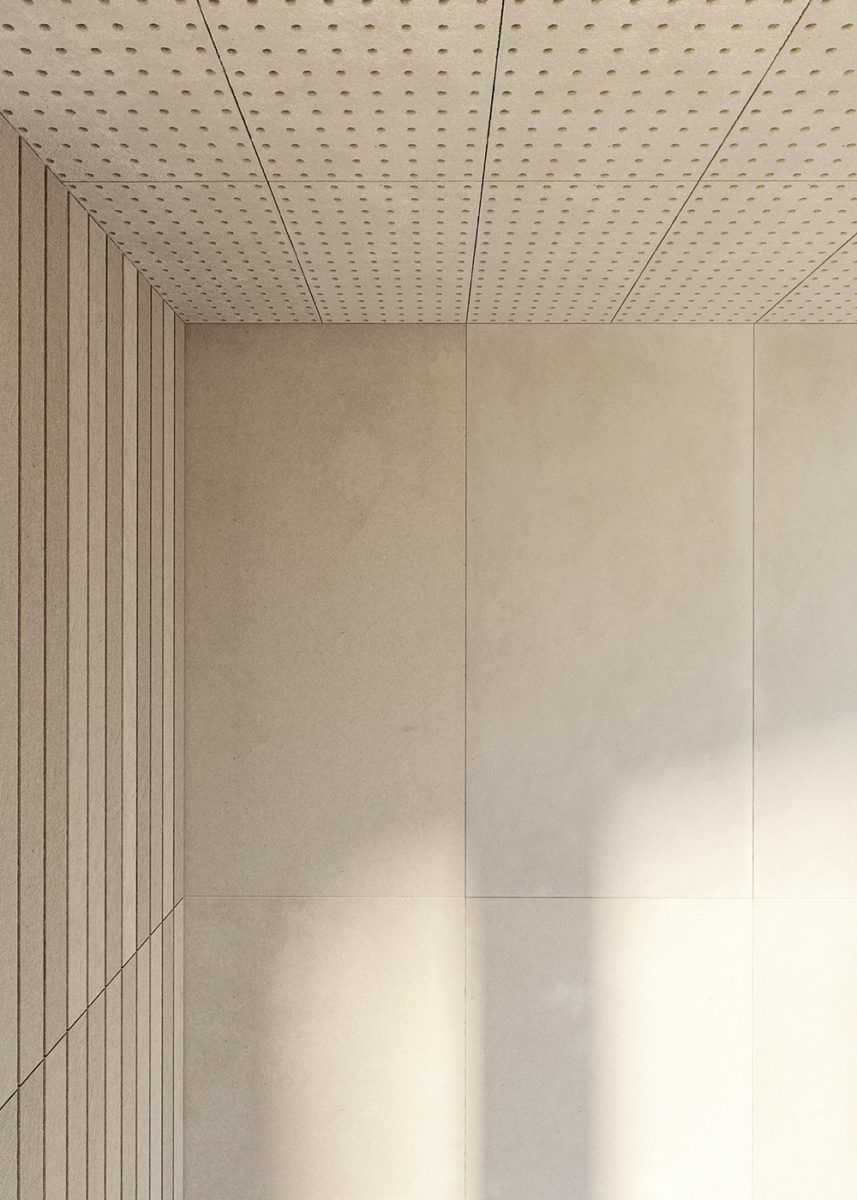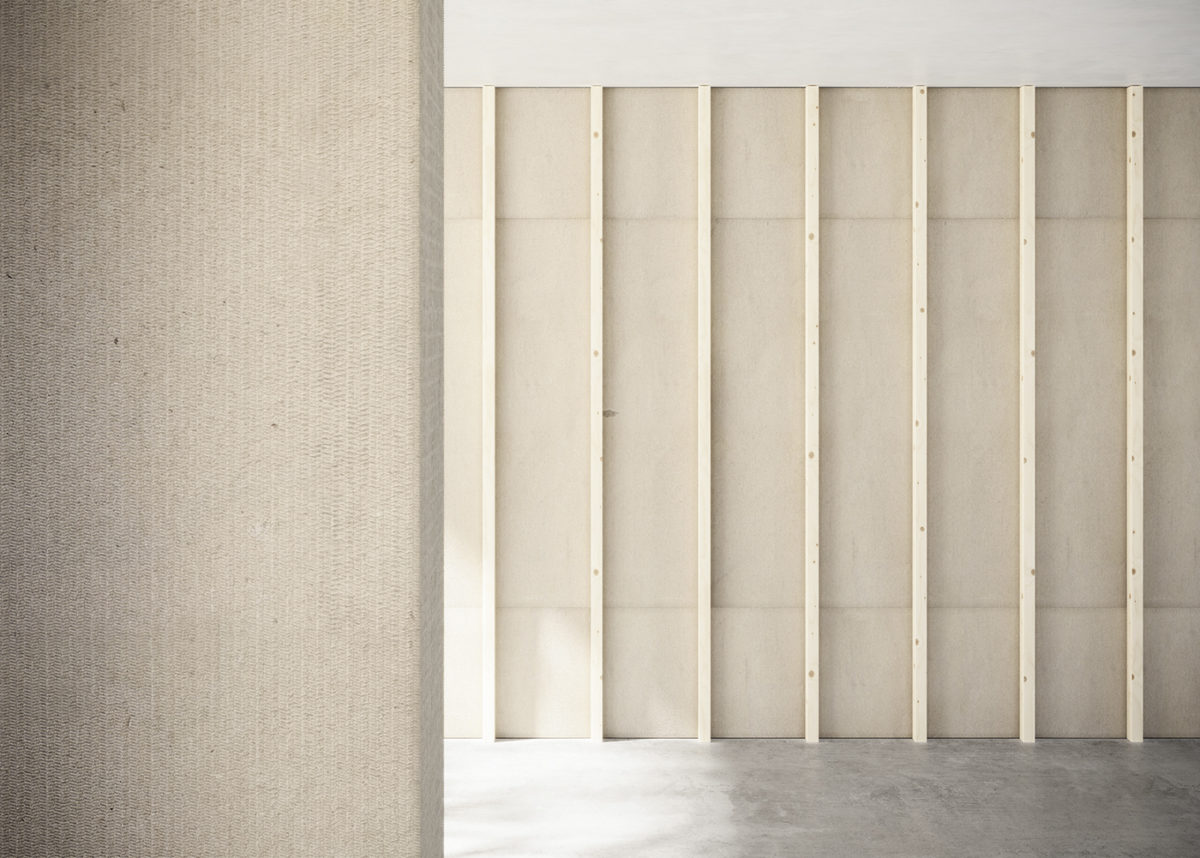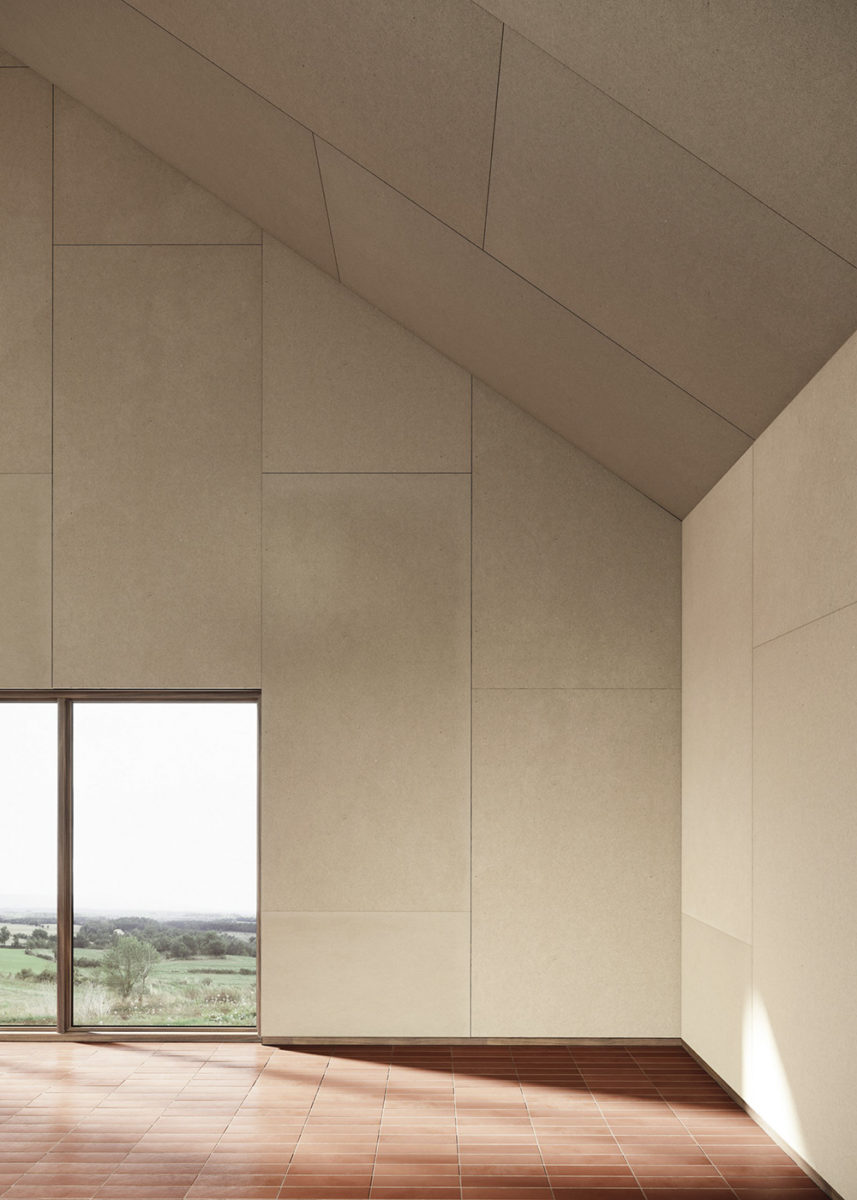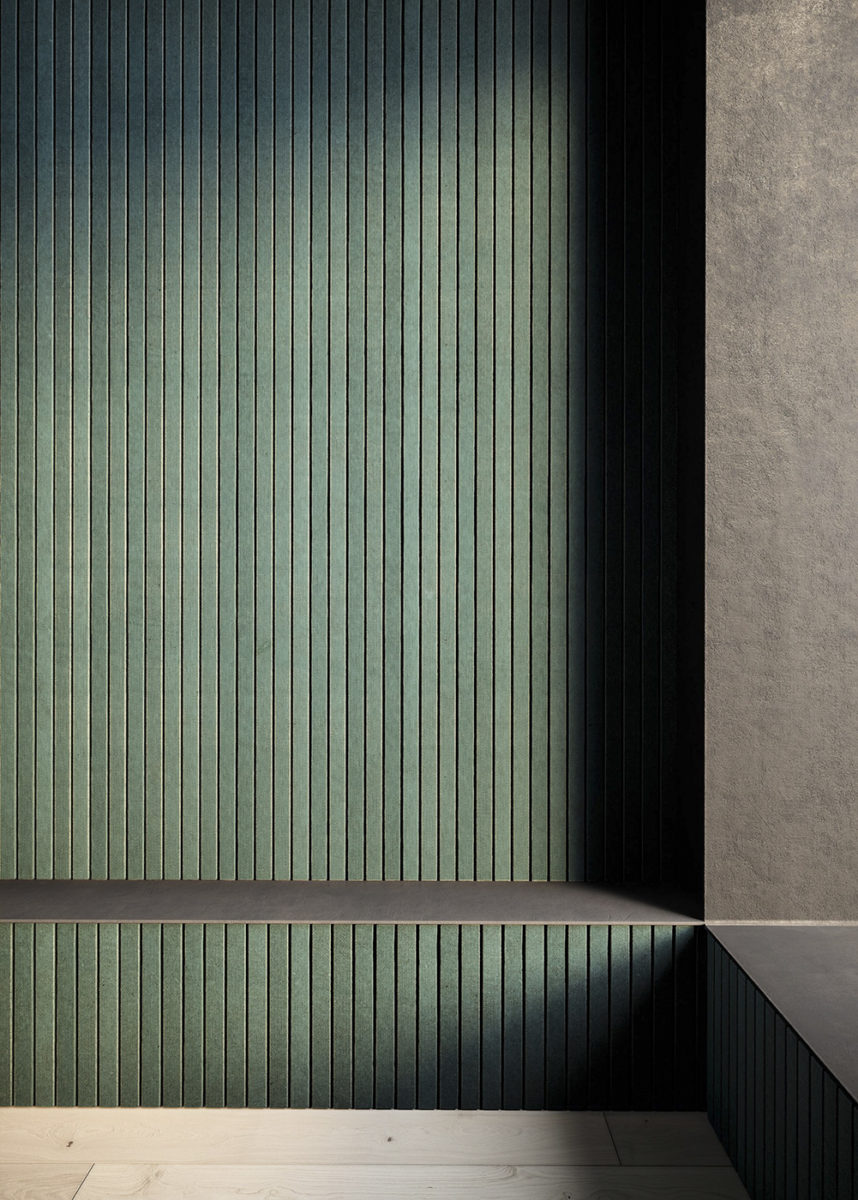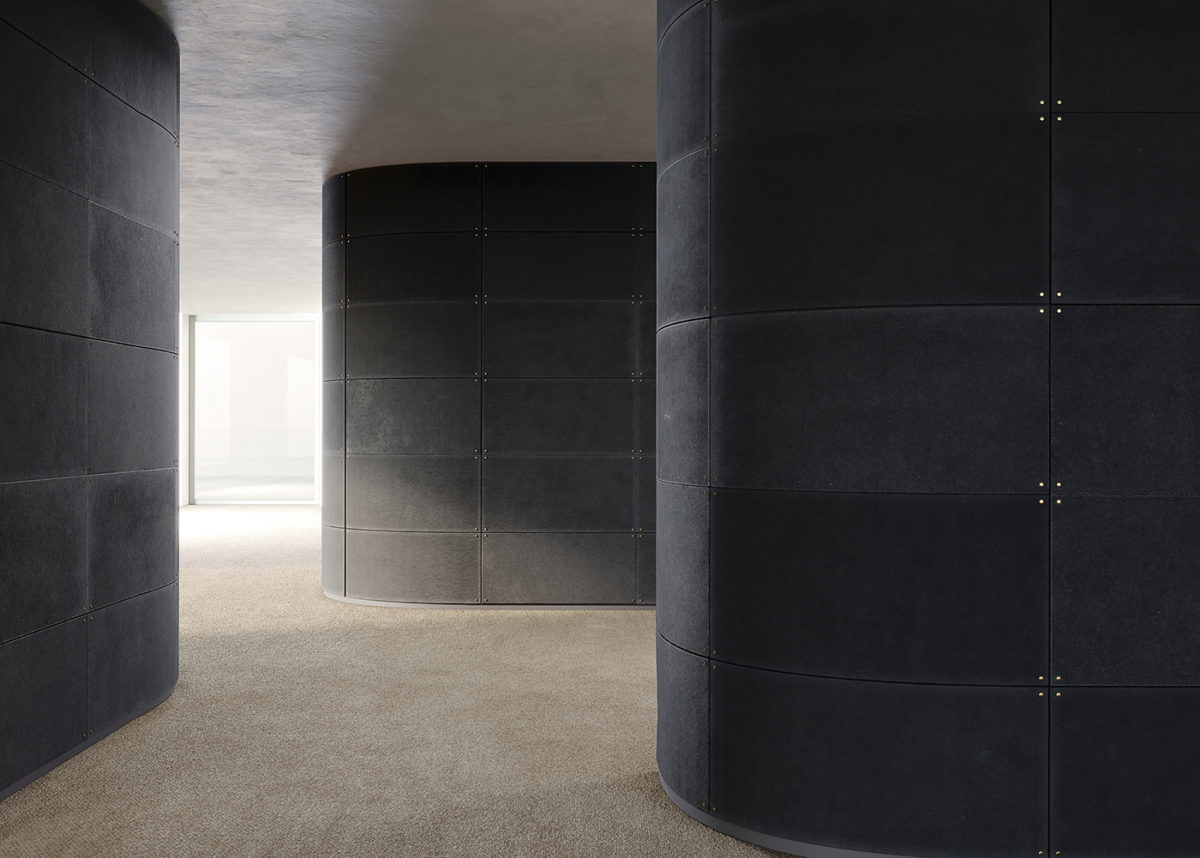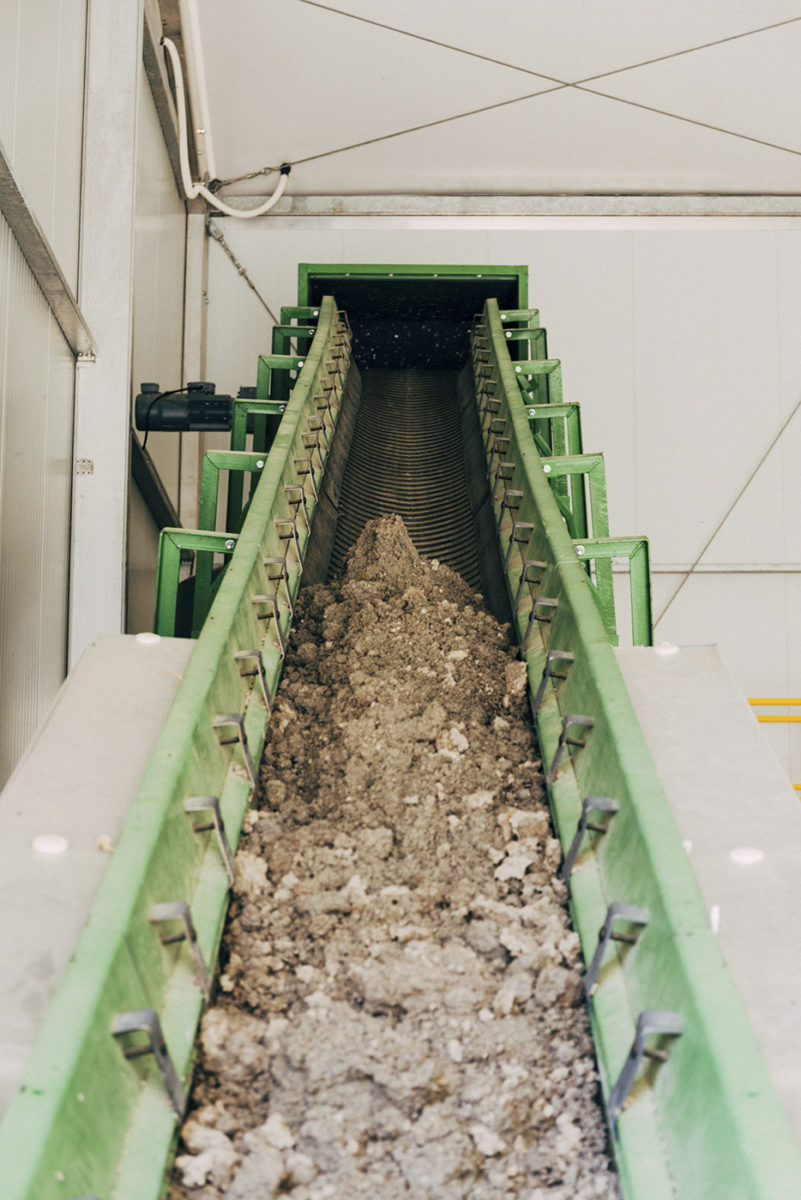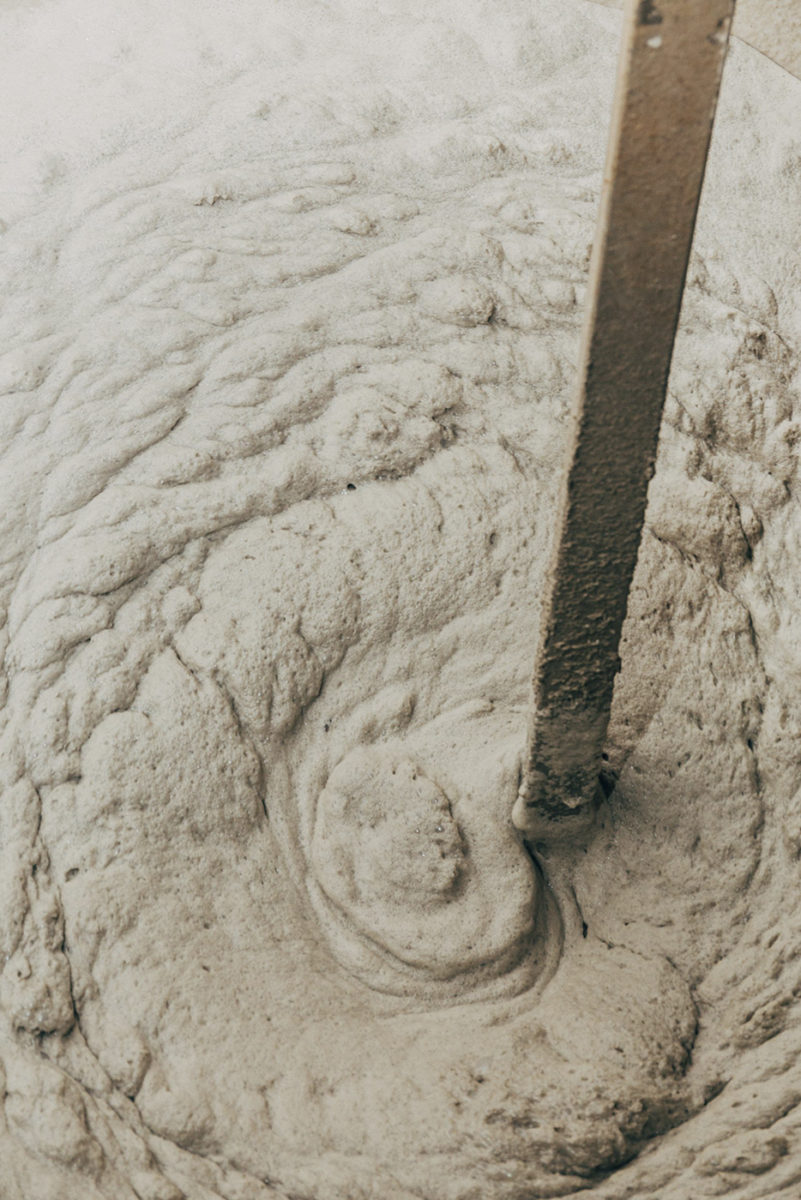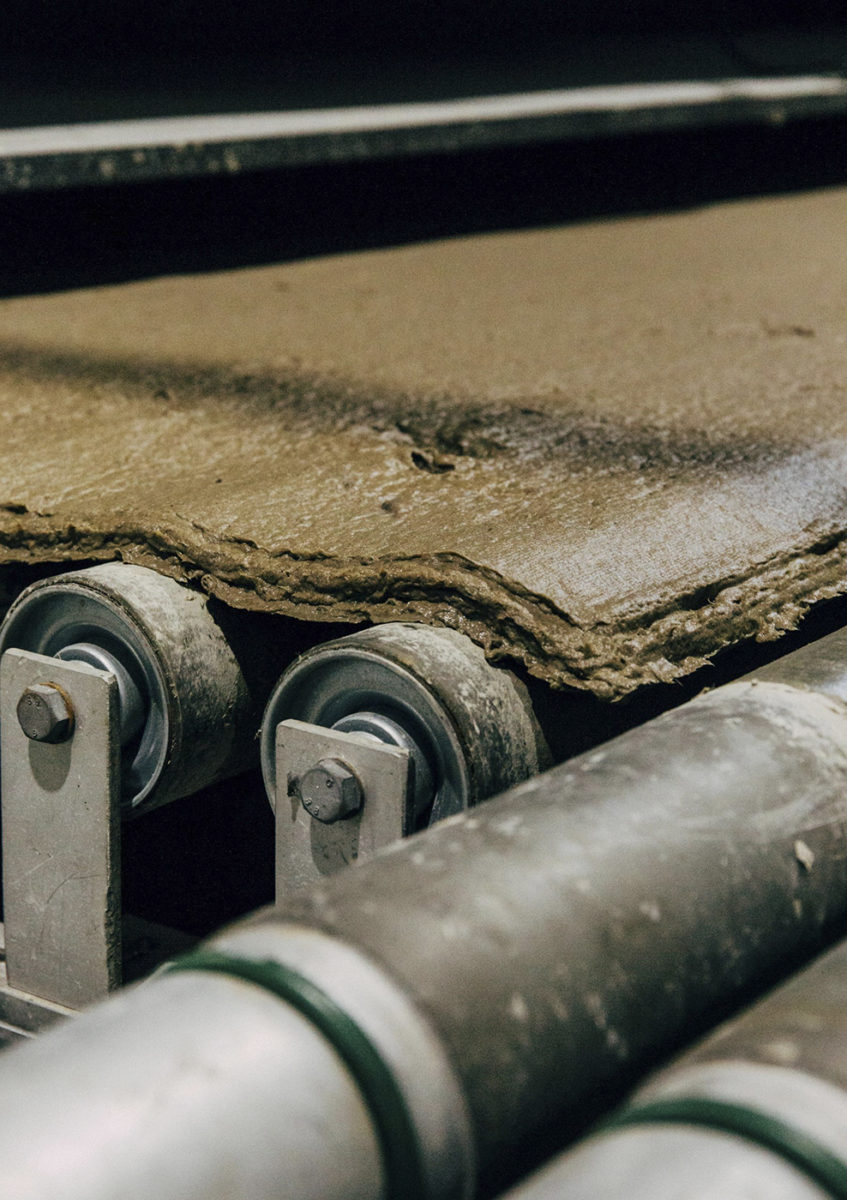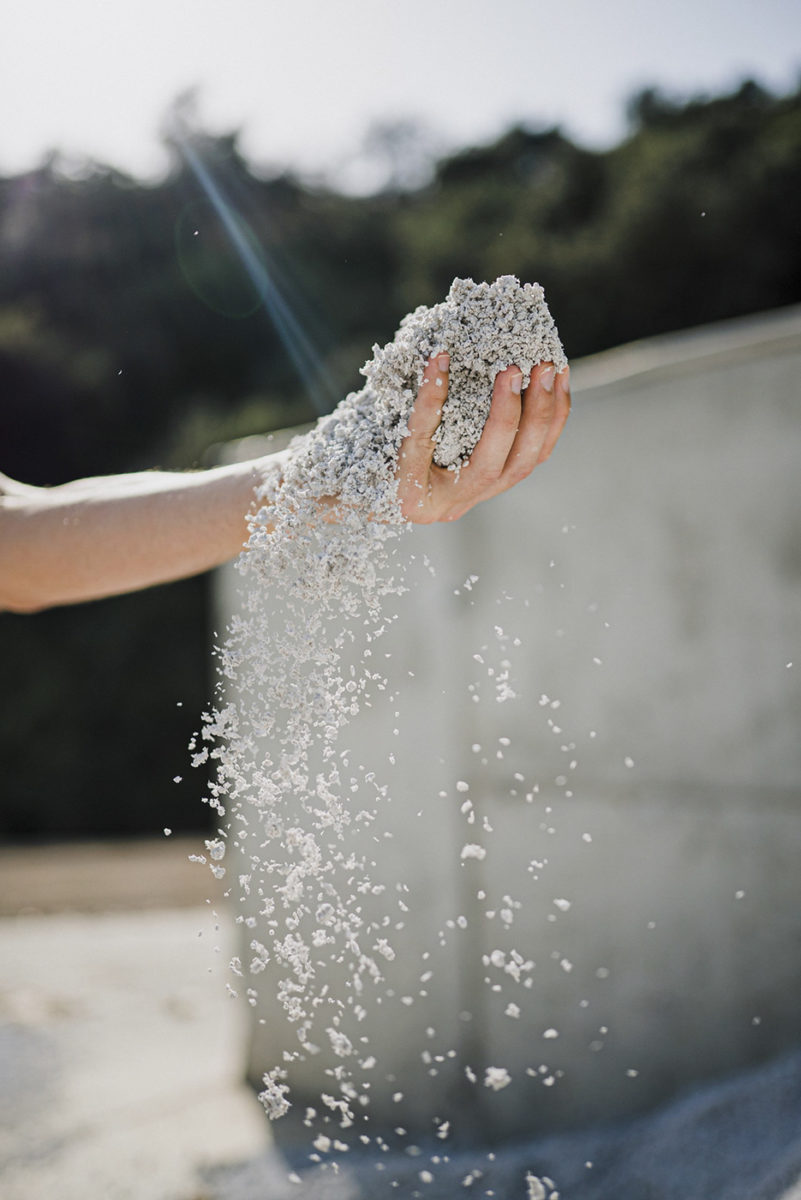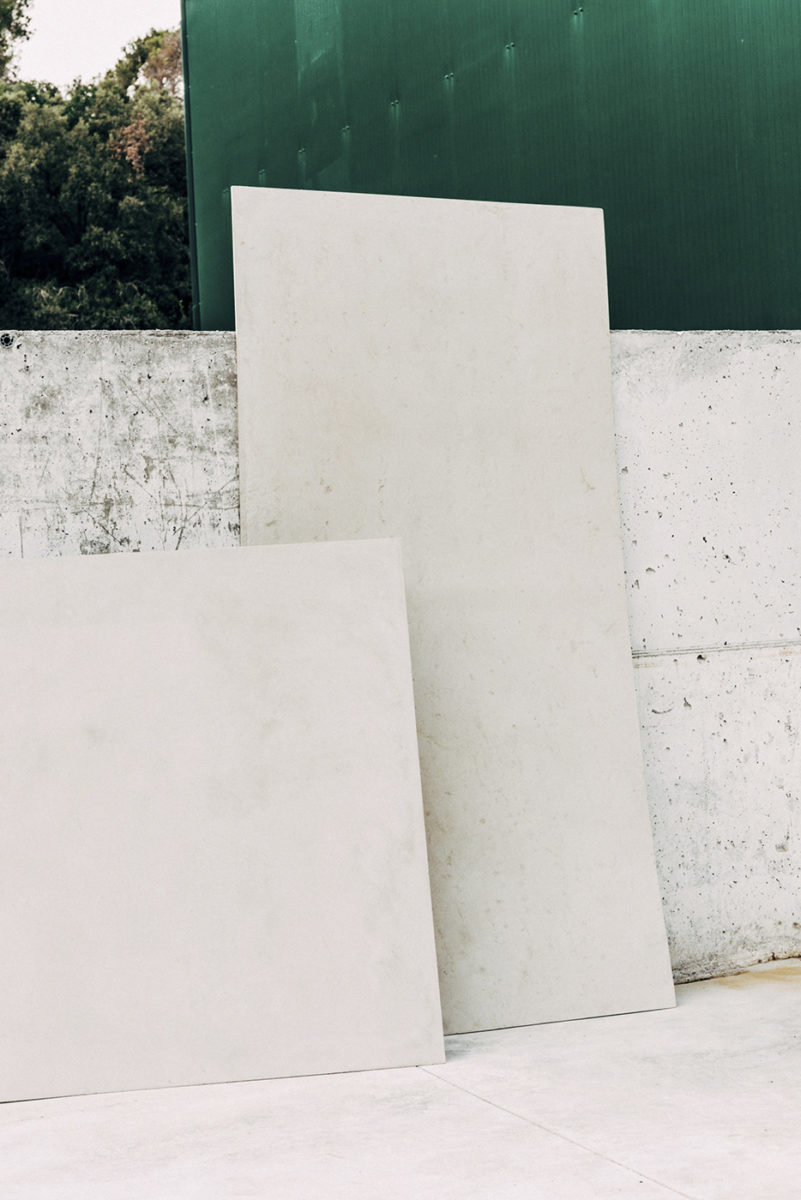
HONEXT MATERIAL
Honext is a Barcelona-based startup which has developed a sustainable construction board material made from a combination of enzymes and cellulose taken from the paper production waste. The material is made from what Honext describes as an “untapped resource”: cellulose residue taken from cardboard and paper waste generated at paper mills. This has already gone through several reuse cycles, meaning that the remaining cellulose fibers are too short to be bound together in order for it to be made into paper again. As a result, these fibers would typically end up in landfill or be burnt, a process that creates an estimated seven million tons waste globally each year.
Here comes Honext, which saves this material from becoming waste by turning it into construction boards for interior partitioning or cladding. The company mixes together waste cellulose fibers with water and enzymes – depending on the quality of the waste, a mixture of 50 to 75 per cent paper sludge and 25 to 50 per cent cardboard waste is used. By adding certain enzymes during the production process, Honext creates stronger bindings between the short cellulose fibers without having to use non-recyclable resins. This enzymatic treatment is key to the process, as fibers of this length – less than five millimeters – can’t usually be held together without resins or other gluing additives for use in the construction industry.
Non-toxic additives are also added to improve the board’s UV resistance. This material mixture is then compressed and shaped into a wet board, before the board is fed through a drying tunnel. After it has dried, any remaining water is evaporated through high airflow and temperature, leaving the final result. This production method also makes the board emissions-free, unlike similar materials like MDF or drywall, it does not emit any harmful particles. The cellulose board is also lighter, more flexible and has greater sound absorption than these materials.
In addition to making the material itself as sustainable as possible, Honext also aims to make the production process carbon neutral. Manufactured in Vacarisses – a village in the province of Barcelona, Spain – Honext’s cellulose material is produced using gas and electricity generated from the digestion of the town’s waste, while any water used is reused in a closed circuit. Once the material has reached the end of its life, it is fed back into the production pipeline to create a new set of boards. This process also strips the material of any coating or finish applied by the constructor.
The next step in the development of Honext’s material is to find leading architects and designers who will use its boards in building projects in order to demonstrate its potential.
c
via dezeen

